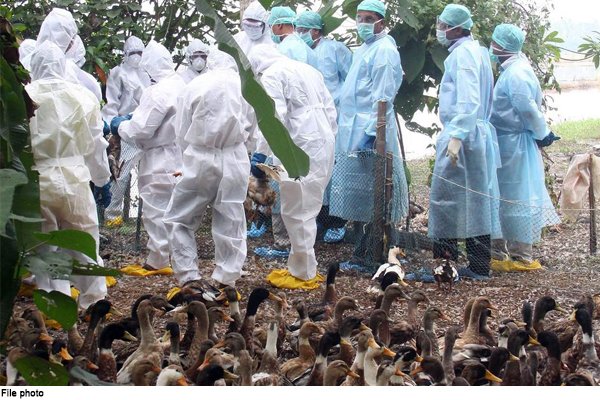New Delhi: Avian influenza (AI) virus has been present throughout the world for centuries. It has recorded four major outbreaks in the last century. The first outbreak of avian influenza in India was notified in 2006. Its infection has not yet been detected in humans in India, although the disease is zoonotic. There is no direct evidence that AI virus can infect humans through the consumption of contaminated poultry products.

Implementing management procedures incorporating biosafety principles, personal hygiene and sanitation, and disinfection protocols as well as adopting cooking and processing standards are effective means of controlling the spread of AI viruses.
In India, the disease is mainly spread by migratory birds, which arrive in India from the winter months i.e. September – October to February to March. The contribution of human maintenance (via phomites) to its secondary diffusion also cannot be dismissed.
In view of the challenge of global spread of AI, the Department of Animal Husbandry and Dairying (DAHD), Government of India, prepared an action plan in 2005 to guide the State Governments for the prevention and control of avian influenza in the year 2006, 2012, Revised in 2015 and 2021 (see DAHD website https://dahd.nic.in/sites/default/filess/Action%20Plan%20-%20as%20on23.3.15.docx-final.pdf10.pdf).
After the completion of control of avian influenza outbreak in the year 2020, the country was declared to be free of AI from 30 September 2020, complying with the Post Operation Surveillance Plan (POSP).
Considering past experience regarding reports of this disease in the winter season, advice has been issued to all states / UTs before the onset of winter, so that necessary vigilance, monitoring, strategic stocking of supplies Necessary steps such as IEC can be taken to prepare (PPE kits, etc.), prepare to deal with contingencies and make the public aware. Other assistance provided by the department to the States / UTs are as follows:
Technical support from the referral lab ie ICAR-NIHSAD, Bhopal
Providing financial assistance to States / UTs for coupling and compensation
Providing financial assistance to states under ASCAD scheme
Veterinary Task Force Training
Provide support to strengthen RDDL / CDDL
The last consultation / message regarding preparation was issued to all the States / Union Territories on 22.10.2020.
Current outbreak
After confirmation of samples infected with ICAR-NIHSAD, AI has been detected in the following states (12 epidemic centers) –
Rajasthan (crow) – Baran, Kota, Jhalawar
Madhya Pradesh (crow) – Mandsaur, Indore, Malwa
Himachal Pradesh (Migratory Bird) – Kangra
Kerala (Poultry Duck) – Kottayam, Allapuzha (4 pandemic centers)
Accordingly, one advice each has been issued to the states of Rajasthan and Madhya Pradesh on 01 January 2021 to prevent the spread of infection. According to information received from the states of Madhya Pradesh and Rajasthan, control measures have been initiated as per the guidelines of the National Action Plan for Avian Influenza. The second consultation was issued to Himachal Pradesh on 5 January 2021. In this, the state has been advised to take necessary steps to prevent poultry disease from progressing further. As per the report received, Kerala has already started control and prevention operations at the epidemic centers from 05 January 2012. The coupling process is underway.
The Department of Animal Husbandry and Dairying, Government of India has also set up a control room in New Delhi to monitor the situation and track the daily situation based on preventive and control measures taken by the state authorities.
According to the Action Plan on Avian Influenza, the affected states have been given suggestions about the control of the disease and measures to be taken to prevent its spread. The suggestions include strengthening the biosafety of poultry farms, disinfecting the affected areas, proper disposal of dead carcasses, timely sampling for disease confirmation and further monitoring and sending them for testing. This includes intensive implementation of surveillance schemes along with general guidelines to prevent the spread of disease from infected birds to poultry and humans. States have also been advised to coordinate with the Forest Department to report on unusual deaths of birds. Other states have also been advised to report vigilantly about unusual death of birds and report immediately to take necessary measures.
